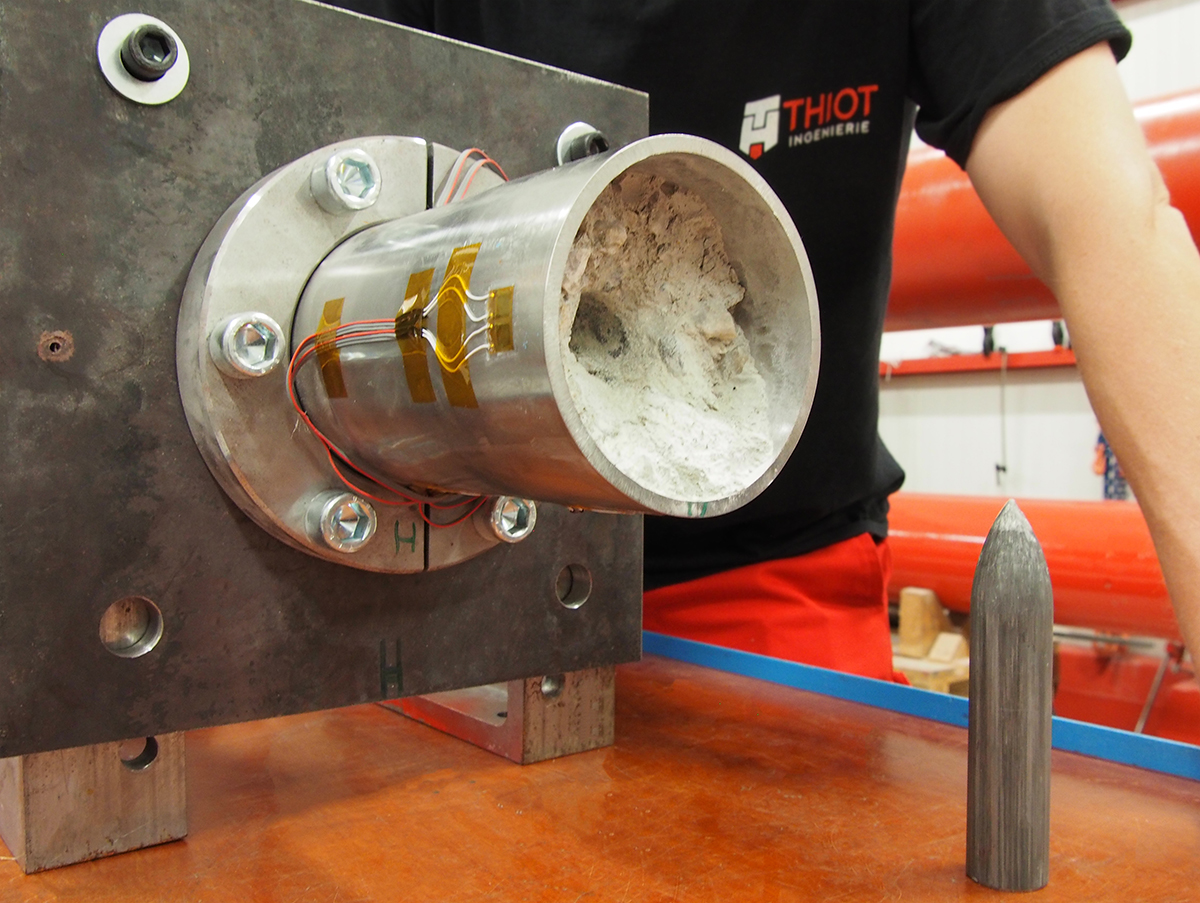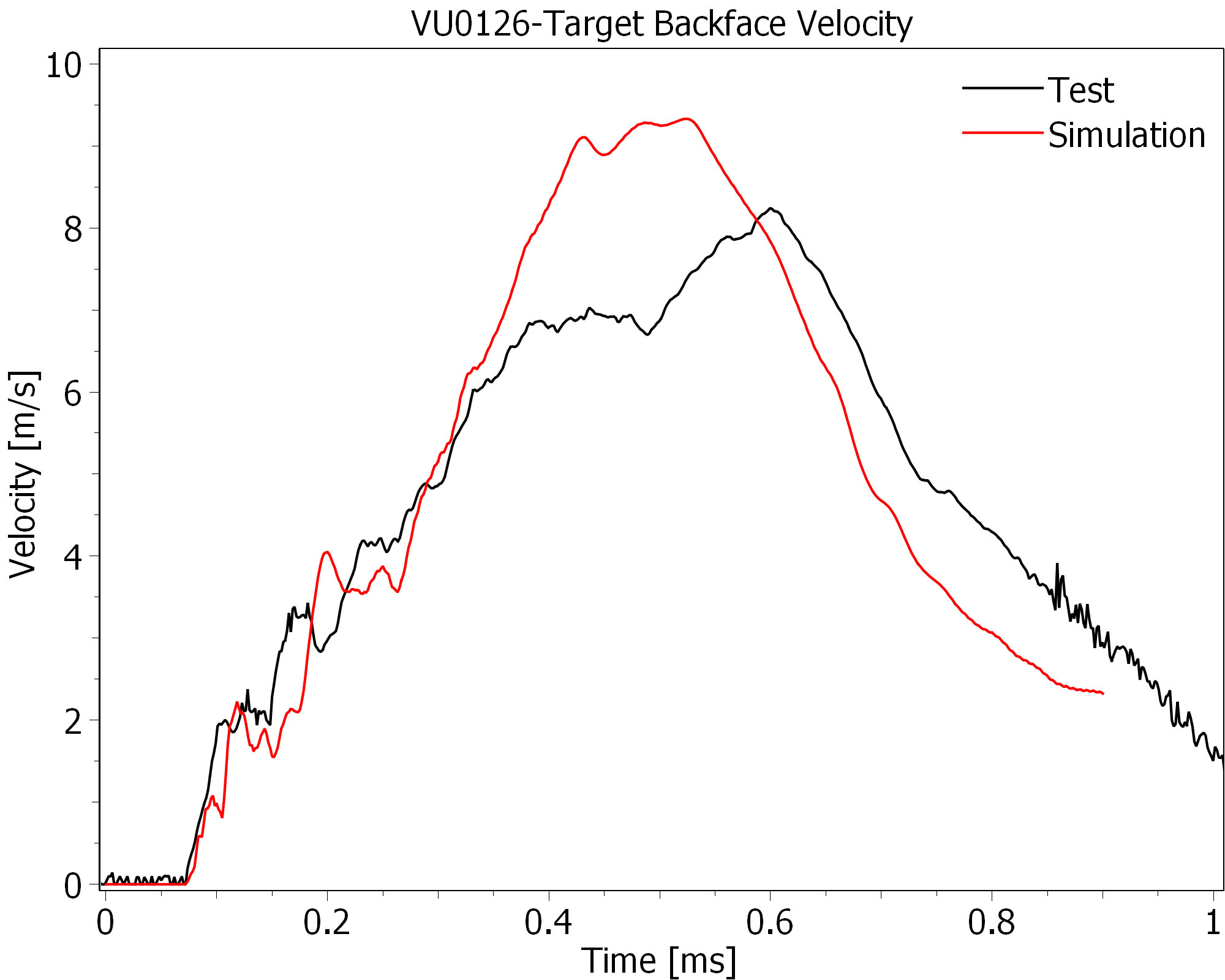Concrete is the most widely used building material due to its ease of use, high mechanical strength and durability. Reinforced concrete floors and walls are especially used to protect sensitive buildings and sites against military or terrorist threats and activity. Understanding how concrete reacts when subjected to an impact, crash or explosion is crucial when it comes to sizing sensitive structures.
In this respect, in 2018, Thiot Ingénierie initiated an internal study – similar to what was done for hailstone – to understand the behavior of concrete when subjected to high dynamic structural loading and perforation in particular.

Numerical simulation of a confined concrete impact configuration. This validation test constitutes the final step in the process to characterize the concrete in question. It confirms the ability of the calibrated material model to reproduce the results of this test
Our engineers have defined relevant test configurations to differentiate and provide inputs for existing material models. By coupling testing and simulation, we validated a method of characterization adapted to the study of impacts in a confined environment (heavily reinforced concrete). This study highlighted the most important parameters enabling the model to reproduce all of the penetration phenomena observed during testing. The model applies to a wide velocity range culminating in hypersonic impacts..

Target backface velocity testing / simulation comparison
Our developed concrete expertise enables us to provide our customers with security wall sizing and optimization of penetrator performance services.
Coming soon: the effects of blast on concrete structures.
